Heinrich Büssing: pioneer in mobility
Heinrich Büssing: pioneer in mobility
Heinrich Büssing built bicycles, designed railway signal boxes, and went down in history as a pioneer in the construction of trucks and buses. SUSANNE THEISSEN pays tribute to the German inventor who owned almost 250 patents and founded several companies, including Büssing AG, which was taken over by MAN in 1971.
Heinrich Büssing was born on June 29, 1843, in the village of Nordsteimke, now a district of Wolfsburg. After obtaining his certificate from the village school, he trained with his father as a blacksmith. Two years later at barely 18 years old, Büssing spent a year and a half wandering through Germany and Switzerland. During his travels, the young craftsman discovered how industrialisation was radically altering life and working patterns. He recognised that the future would belong to industrial production. Spending the rest of his life in his father’s business was something he could no longer imagine. He wanted more.
Back home, he enrolled as a guest student at the Collegium Carolinum in Braunschweig (later the Technical University of Braunschweig) and attended lectures in mechanical and civil engineering. In 1866, aged 23, he found employment in an engineering office that specialised in railway construction. But even that did not hold the energetic Büssing back for long: he became self-employed in 1868.
Below: Heinrich Büssing (seated, second from left) with his family in the garden, taken in 1895.
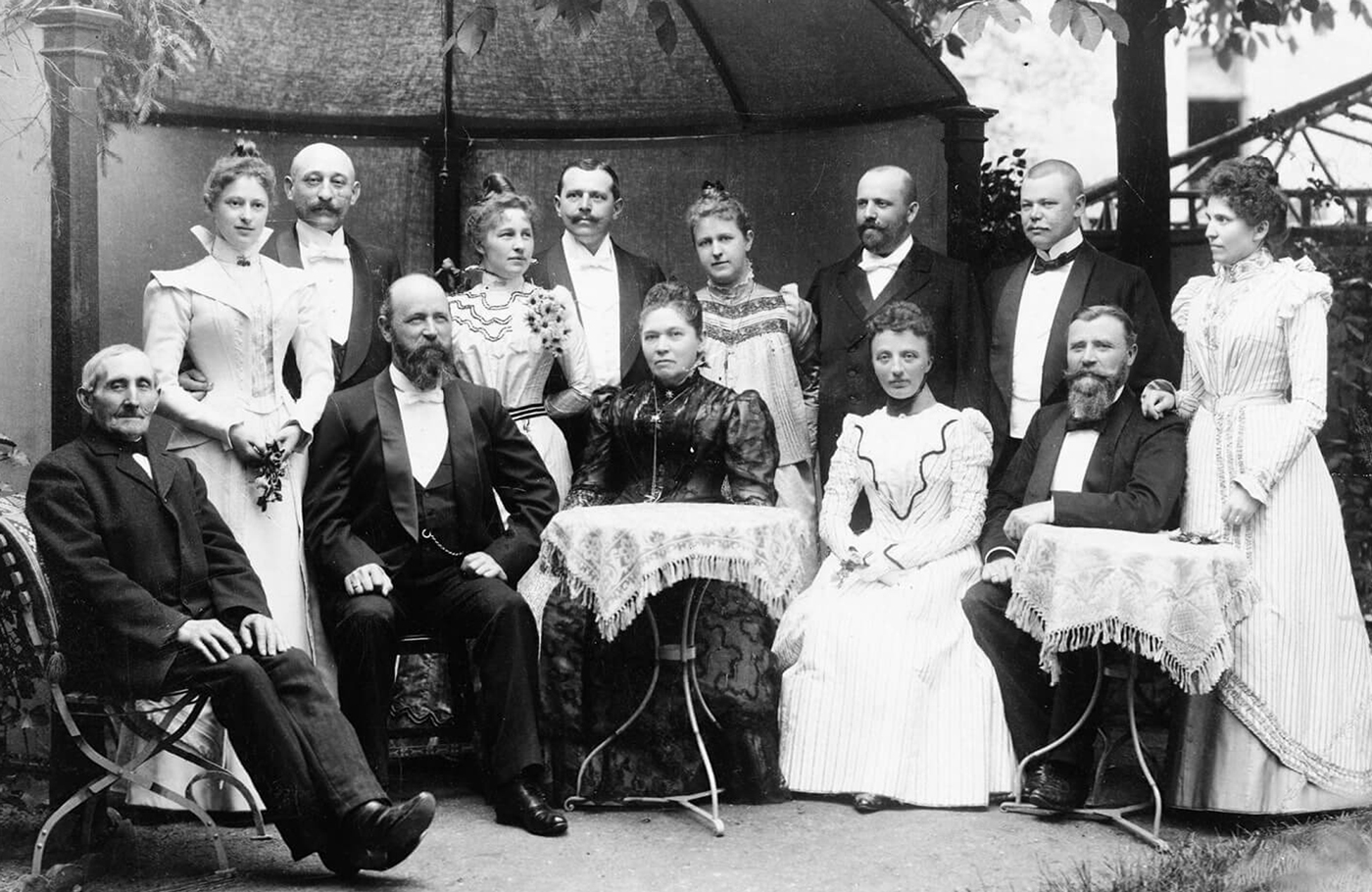
BEGINNINGS AS A BICYCLE MANUFACTURER
Büssing opened a “velocipedes factory” with a small workshop in Braunschweig, where he designed and built bicycles. The young family man and father did not doubt that mobility would play a key role in the industrial age.
Büssing proved his creativity as an inventor right from the start. He continuously improved his two- and three-wheeled bicycles with iron tyres; he made them more elegant, affordable, and popular using clever marketing campaigns. He advertised them in letters, brochures, and small ads, as well as presenting them at exhibitions.
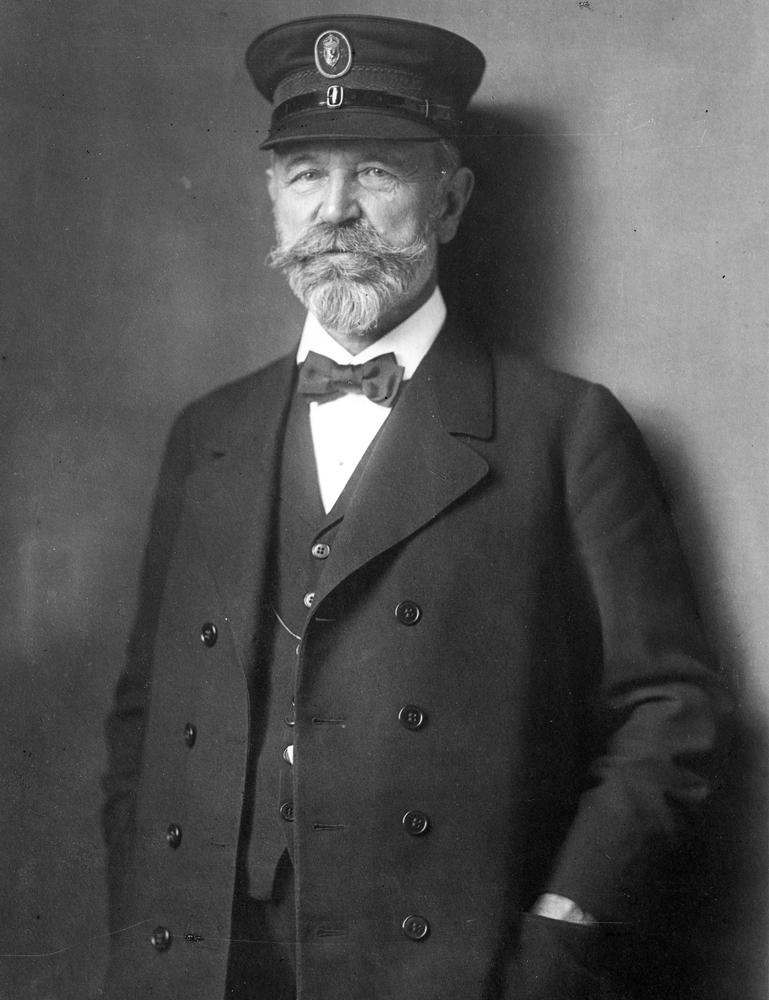
But it all came to an end in 1870, as Büssing fell into financial difficulties and was forced to abandon his production. This was partly due to the outbreak of the Franco-Prussian War, which wrecked his international business connections.
Below (in slide order): A Büssing truck IV Gln stands in front of the factory in Braunschweig, photographed in the 1920s. The lion is already emblazoned on the archway.
This Büssing six-wheel car ran on the Hamburg elevated railroad, ca. 1926.
This photo from 1935 shows the Büssing Reichsautobahn bus.
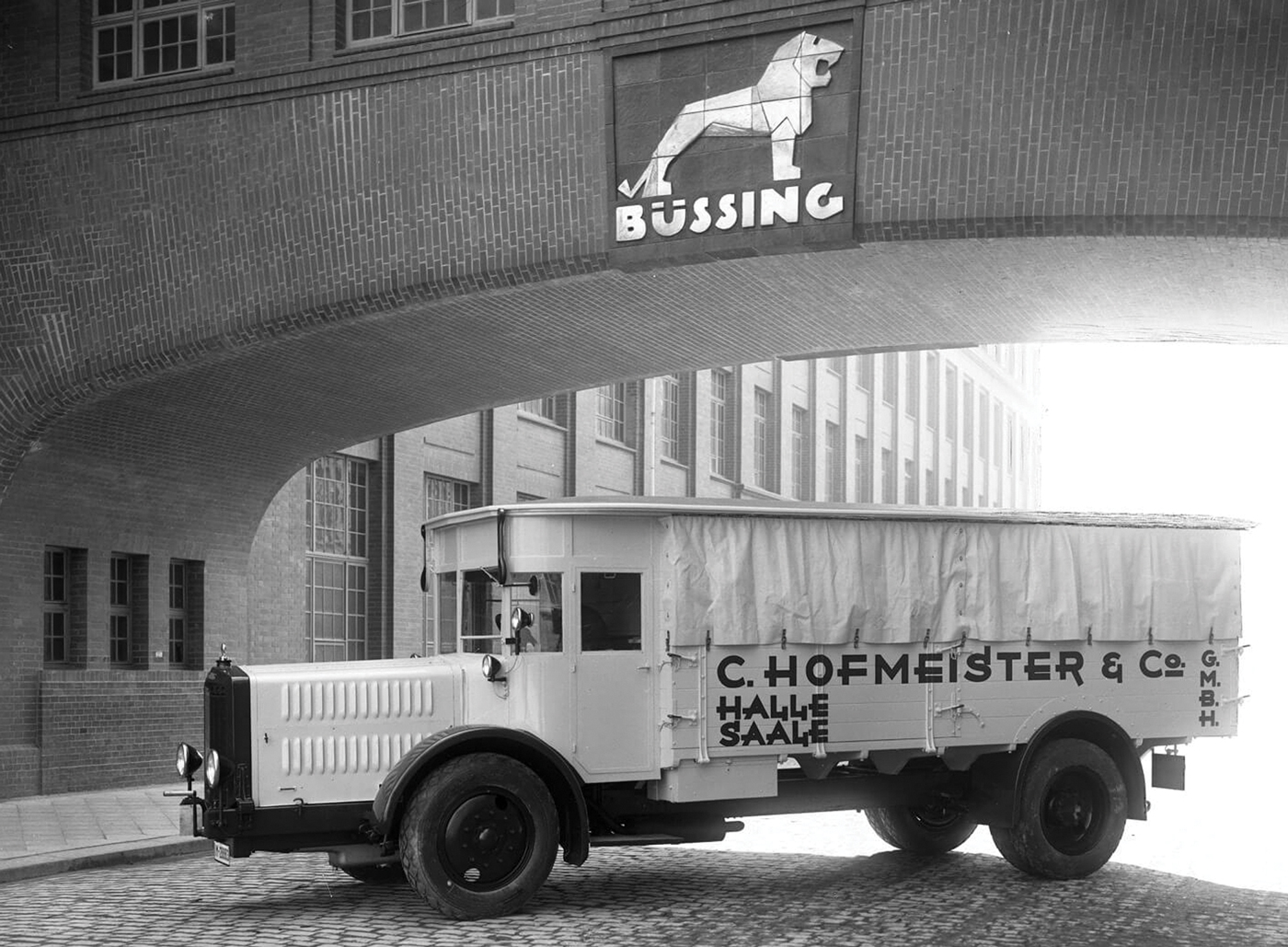
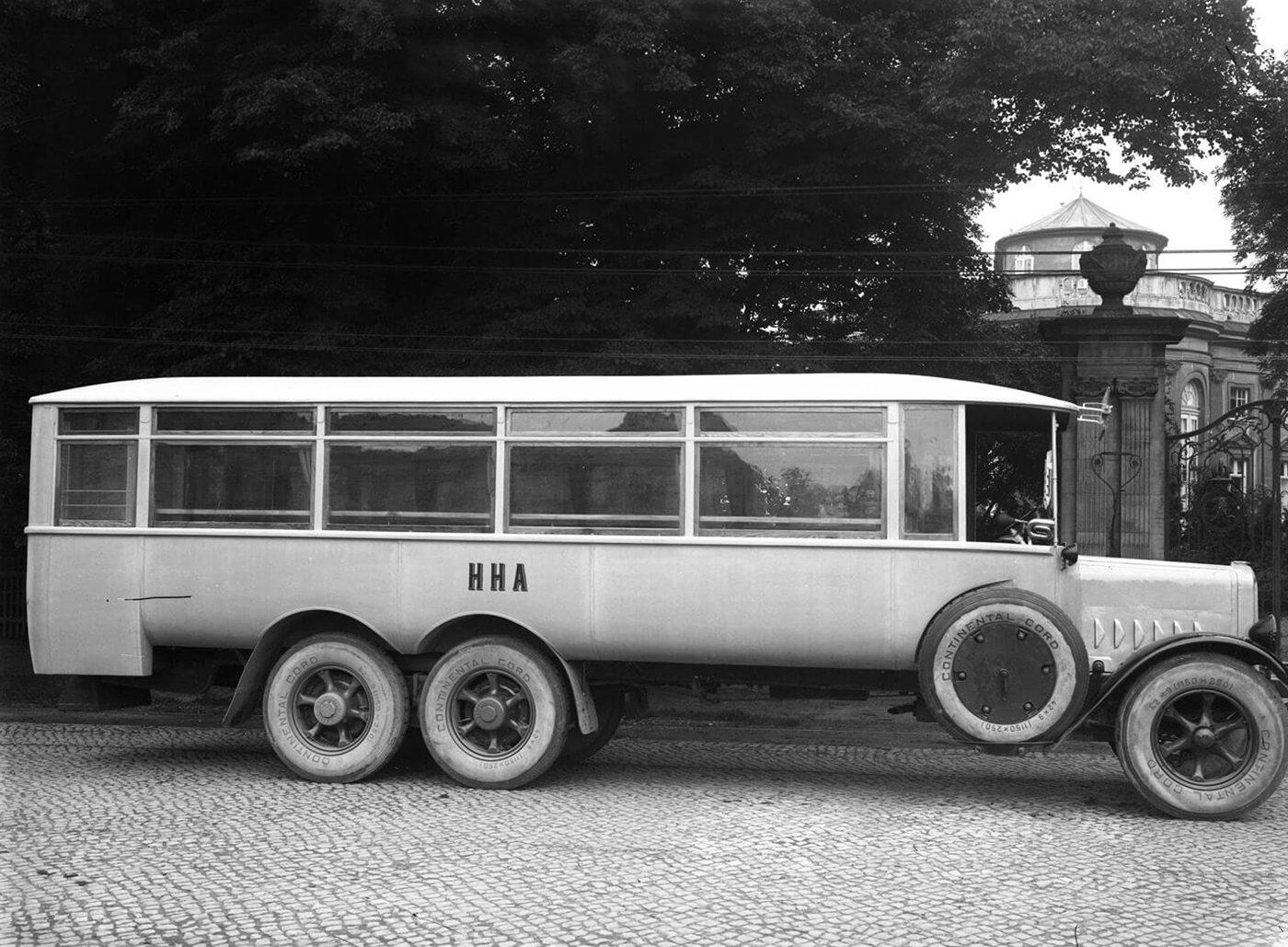
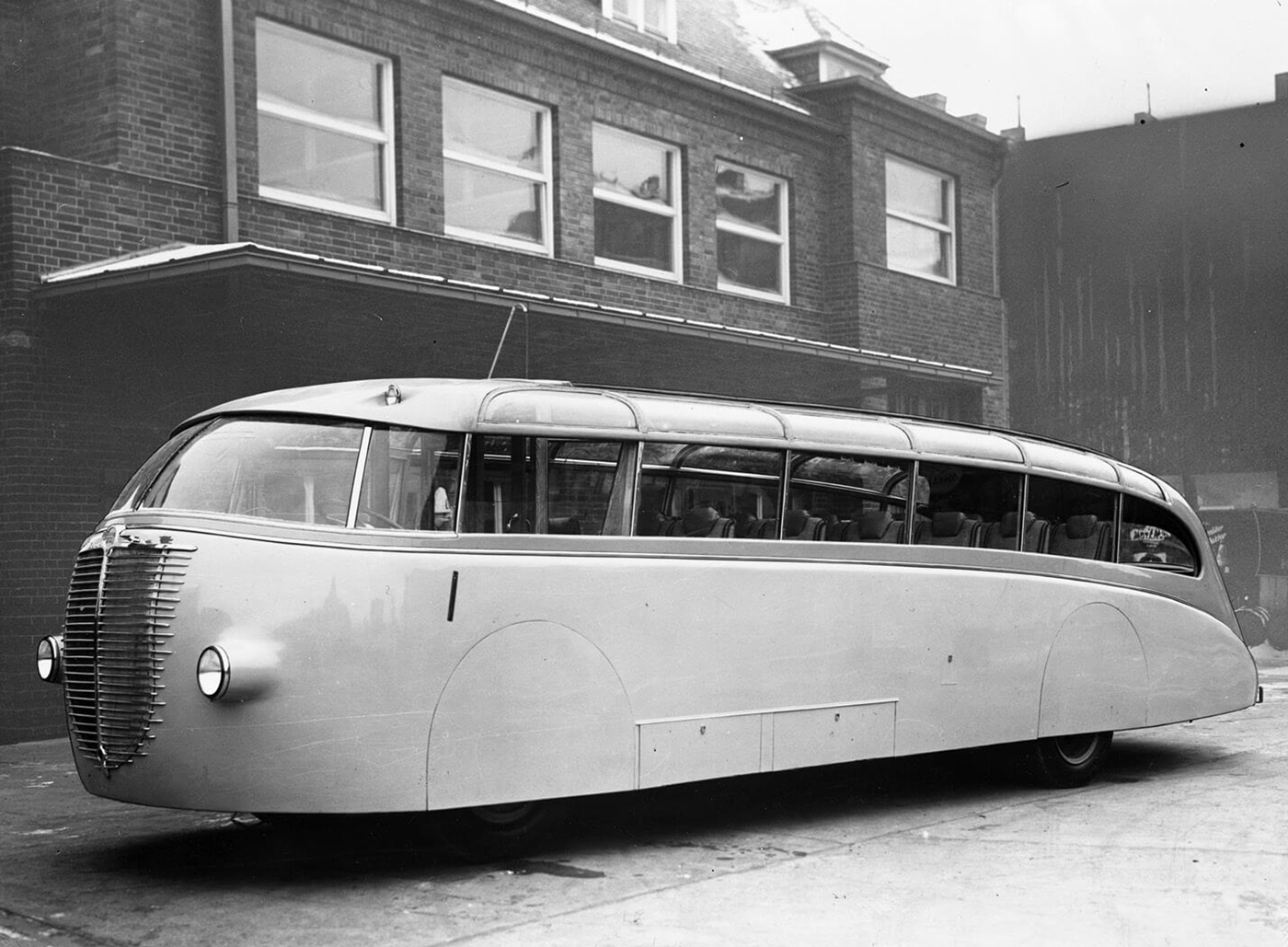
CHIEF DESIGNER AT THE JÜDEL WORKS
In the same year, Büssing made a renewed attempt as an entrepreneur, but his mechanical engineering company landed him in debt. The tide turned for the inventor in 1873, however, when he joined Braunschweig merchant Max Jüdel in founding a railway signalling company.
Büssing became chief designer in “Eisenbahnsignal-Bauanstalt Max Jüdel & Co” and realised many pioneering ideas in railway construction. In total, he applied for 92 patents in this field – but his inventive spirit was far from exhausted.
A SWITCH TO TRUCKS AND BUSES
Büssing wanted to further advance the mobility of people and goods, so he withdrew from the railway business at the start of the 20th century. In 1903, together with his sons Max and Ernst, he founded “H. Büssing, Special-Fabrik für Motor-Lastwagen und Omnibusse” on the site of a former laundry in Braunschweig. The engineer, who was by now 60 years old, had been experimenting with commercial vehicle construction since 1900. In 1902, he built his first experimental vehicle called “the grey cat”. Although the designer already had a fulfilling and successful professional career behind him, he knew that the full potential of mobility was not yet exhausted – especially not for the general populous.
Below: The Büssing plant was located at what was then Elmstraße 40 in Braunschweig, today’s Heinrich-Büssing-Ring. The photograph of the plant is from 1918.
“We are building vehicles for people who would otherwise have to walk. Others may wish to build for people who previously drove in a carriage,” stated Büssing in his company’s objectives in 1903. That same year, the Büssings produced the first roadworthy truck driven by a two-cylinder petrol engine, with an output of 9 PS (Pferdstarke – German for horsepower).
Just one year later came the young company’s second coup: the production of a 20-PS chain-driven omnibus with a maximum speed of 30 km/h. The bus could carry 12 people and soon went into series production. The vehicle’s frame consisted of U-beams, which were otherwise used in railway construction. The wheels were made of hard rubber. The vehicle had a patented rear axle suspension and a differential lock. Büssing, in cooperation with Continental, started developing the first pneumatic tyres in 1906 to improve the comfort of driving in his vehicles.
FIRST BRAUNSCHWEIG, THEN THE WORLD
Büssing distributed his vehicles with great success. As early as 1904, his buses operated in regular service under the umbrella of the Büssing-owned “Automobil-Omnibus-Betriebs-Gesellschaft Braunschweig”. As well as people, these buses also soon transported postal items.
Also in 1904, the company delivered 400 chassis to London, where they served as the substructure for the predecessors of the famous double-decker buses. Expansion into international markets actively drove the company forward: from 1908, branches were established in St. Petersburg, Moscow, Kyiv, Odessa, Riga, Warsaw, and the Netherlands.
Below: Various brochures for Büssing from the 1930s.
In the 1920s and 1930s, the company, which had been using the Braunschweig lion emblem for advertising purposes since 1913, rose to become one of the leading commercial vehicle manufacturers in Germany and Europe.
From 1923, Büssing produced buses with three axles, with the two rear axles being driven. The first Büssing bus with an underfloor engine was introduced in 1929: a three-axle “forward control” vehicle with the designation HAWA-Trambus. Underfloor motors had the advantage of being very accessible for maintenance and giving more space for cab design. There was also less noise and odour in the interior.
AN UNFORGOTTEN PIONEER
Büssing died in 1929 at the age of 86, having acquired more than 150 patents in the field of vehicle development. His sons continued to run the company and later made a name for themselves with several technical innovations, including a motorway bus with two 140 PS diesel engines that was presented in 1934. From 1936, Büssing produced two- and three-axle tram buses with underfloor engines. During the Second World War, the company produced crawler tractors, armoured scout cars, aircraft engines, and trucks. The latter included a light off-road model, the so-called “Einheitsdiesel” (standard diesel truck).
Büssing was converted into a public limited company, Büssing AG, which last made a profit in 1960. Salzgitter AG merged with the company in 1962 and took it over in full until 1968, relocating production to Salzgitter in 1965. Excessive development costs and other factors brought the company into ever-greater economic difficulties, however, and it was eventually taken over by MAN in 1971.
MAN retained the Büssing corporate logo, the Braunschweig lion. This still adorns the radiator grille of MAN commercial vehicles to this day, reminding us of the “king of trucks” and pioneer of mobility, Heinrich Büssing.
Published by
Focus on Transport
focusmagsa








